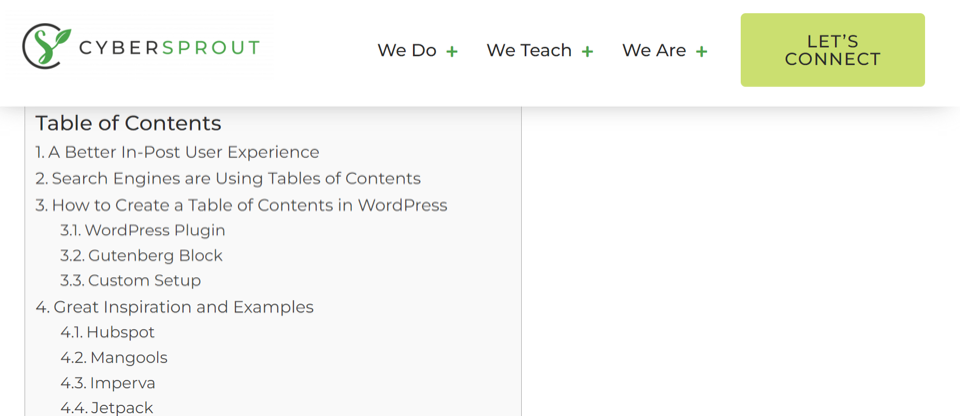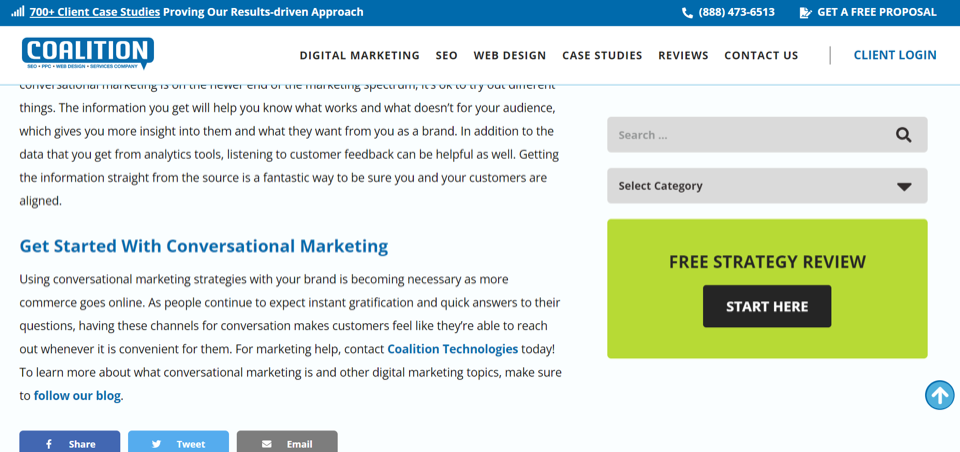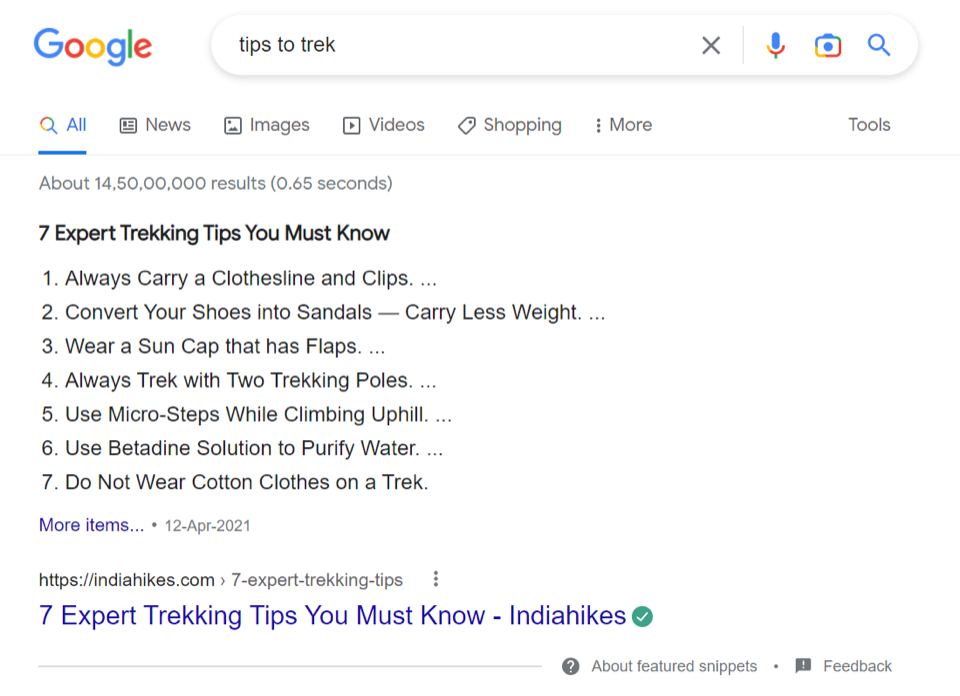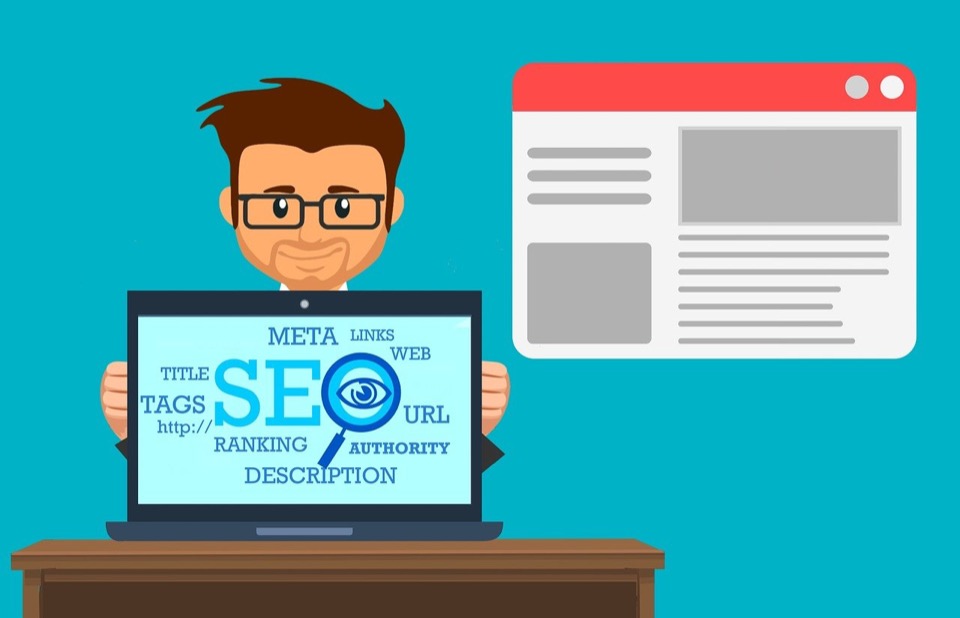More and more companies are putting out new blog posts every day, so content creation is not a choice anymore. If you have an online business and want to succeed, you have to join in. Our blog SEO tips can help you do it the right way.
Content marketing is crucial to businesses, so we have prepared a comprehensive guide on SEO for blog posts to help your content rank higher on search engines and attract more viewers.
How Does SEO for Blog Posts Work?
Search engines such as Google and Bing use bots (crawlers or spiders) to crawl web pages and collect information about them. These bots analyze web page contents, topic clusters, and internal and external links to understand their connections and put them in an index.
Blog SEO (search engine optimization) helps websites improve their organic search and increase site visibility. It helps enhance the appearance and positioning of web pages to attract genuinely interested visitors.
When users enter a query, search engines use algorithms to inspect the web pages in the index by looking at different SEO factors such as keywords and content quality. Pages offering the most relevant information to the search query (and those optimized according to blog SEO best practices) show up at the top and attract the most viewers.
SEO-generated leads have a 14.6% close rate, while traditional methods such as print advertising have a 1.7% close rate. Plus, 72% of online marketers agree that blogging is their most powerful SEO tool. So following blog SEO tips to optimize your website is crucial.
How Can a Blog Post Help SEO?
A blog post has many benefits for SEO. Here are some of the most important.
- Generates new content and increases visibility
A blog allows you to put out new content regularly and gain more visibility by reaching a wider audience. According to 60% of marketers, SEO and content creation produce the highest quality leads.
- Promotes picture and video content
You can add pictures and videos to your blog posts to increase their value and incorporate more blog SEO tips, like alt text.
- Builds brand authority
As you blog more about the topics in your field, you establish yourself as an industry leader. Comprehensive blog content demonstrates your expertise, and consumers who trust you will be more likely to purchase your products or services.
- Creates backlinks through guest blogs
As your blog expands and you gain authority, you’ll gain higher chances of publishing guest blogs on other websites. Third-party webmasters will be more motivated to publish your content if they respect your position in the industry. This blog SEO best practice gives you a larger following by gaining exposure to the audiences of other webmasters.
- Encourages keyword usage that improves search ranking
You can use blogging to rank for many different long-tail keywords. Using keywords in your SEO strategy for blog posts will improve your overall position in search engines and increase organic traffic.
- Improves internal linking
All blog SEO tips emphasize the importance of internal linking. As you learn to use internal linking, you can create an effective hierarchy that keeps visitors browsing your site.
- Allows social media sharing
Blogs provide a great opportunity for your readers to share your content on social media and increase your recognition.
- Increases chances of becoming viral
If enough people share your blog posts and you effectively leverage these blog SEO tips in your content, you may go viral!
- Creates more indexed pages
Search engines measure your credibility by your number of indexed pages. Websites with blogs have 434% more indexed pages and 97% more backlinks. A great blog allows you to index more pages.
- Increases traffic
Blog SEO best practices help drive more traffic to your website, attract interested leads, and build higher brand awareness.
- Allows you to connect with customers and answer their questions
Blogs give you a unique opportunity to address the concerns and questions of your audience by targeting the keywords they’re searching for. When you give consumers the information they need, they’ll feel heard and valued, and they’ll be more likely to give you their business.
- Creates a better user experience
By considering blog SEO tips, you can improve user experience. Positive experiences keep people coming back.
How Do You Optimize Blogs?
Our comprehensive list of blog SEO best practices, coupled with some local SEO tips, can help boost your search engine rankings.

1. Target the Right Audience
Your target audience is the group of people who might be interested in your products or services. Creating content for the right audience is one of the most crucial blog SEO tips.
Here are some blog SEO best practices you can use:
- Analyze audience demographics
Learn how to identify the questions your target audience is asking. Use tools like Google Analytics to get information about them. You need to know their ages, genders, professions, interests, favorite social media platforms, pain points, and challenges.
- Produce customer insights
Use social media metrics to learn more about your audience. Facebook and Instagram Insights are great tools. Facebook Insights lets you view data on your Facebook page’s audience demographics, interests, page likes, trends, and characteristics. You can use Instagram Insights if you switch to a business account. It will give you access to analytics such as likes, followers, impressions, profile visits, and your audience’s general engagement with your account. This tool is helpful if you want to try influencer marketing for your business.
- Create buyer personas
Once you have gathered enough information about your audience, you can create buyer personas with them. A buyer persona is a semi-fictional profile with a detailed description of your desired customers. Here you can give your potential buyer a name, interests, motivations, and demographic details.
This tool will help you identify and understand your potential customers better. It will also allow you to make personalized blog posts and build more effective content marketing strategies.
2. Conduct Keyword Research
Using the right keywords is a fundamental blog SEO tip. It is directly related to getting better results. Search engines evaluate your page based on the keywords you use. So you need to know how to do keyword research for better SEO in your blog posts.
The following steps can help you do that:
- Know what your target audience is searching for by using keyword research tools.
Understanding how your audience searches for your services is crucial. Many online tools provide the most common queries around a specific seed keyword you give them.
Some great keyword research tools are:
You can create comprehensive keyword lists for different search campaigns using these tools.
- Analyze, compare, and prioritize the best keywords.
The tools give you the information you can use to compare keywords and decide on the best one.
Some information these research tools give you include:
- Search volume: the number of times people search this keyword monthly
- Traffic potential: the amount of organic search traffic this keyword receives monthly
- Keyword difficulty: how hard it is to rank for this keyword
- Cost per click: the amount of money that advertisers pay for every click on their page focusing on this keyword
- Understand search intent and target keywords for the intended audience.
Your chosen keyword must be relevant to the searchers’ queries and address their needs.
- Map the keywords according to the buyer’s journey
The buyer’s journey is the 3 step process customers go through before purchasing.
- Awareness: customers want to learn about solutions to their problems
- Consideration: they compare solutions
- Decision: they decide on a solution and buy it
To meet the needs of your potential customers at every stage, you need to choose keywords for each one.

3. Create a Table of Contents
Creating a table of contents at the beginning of your blog is a blog SEO best practice that helps you grab the readers’ attention and keep them interested. It also impacts your SEO positively. By using this blog SEO tip, you can give readers an organized overview of the blog, making the content more scannable and allowing them to jump to relevant sections.
You can create this table using different tools, such as:
- CM Table of Contents
- Table of Contents Plus Plugin
- Easy Table of Contents plugin

4. Add Visual Elements
Including high-quality visuals in your blog posts is the key to successful content marketing, and bloggers who use this tip report better results. By breaking up long sections of text with clear, representative images, you can improve clarity and make the content easier to read. They make your post more memorable while improving reader engagement and social media sharing.
Other visual elements like videos, graphs, charts, and diagrams can liven up your blog and better explain complex topics. According to reports, 54% of people like to see video content online.
So as well as following blog SEO tips for written content, you need to include visual elements to improve your blog.
Tips on images:
- Use royalty-free images from websites like Unsplash and Pixabay
- Use pictures of people to add a touch of humanity
- Use screenshots to demonstrate your points more clearly
- Create images with tools such as Canva
- Provide keyword-rich alt texts and file names to boost SEO for your blog posts and make them more accessible
Tips on videos:
- Embed YouTube videos to your blog using their codes or URLs
- Create unique videos with tools such as PowToon and Biteable
- Use compelling thumbnails to catch the attention of viewers
5. Entice with a CTA
Including CTAs (calls to action) is a crucial blog SEO tip for lead generation. If you attract readers with other blog SEO best practices, you want them to take action after they finish reading. A CTA does just that.
Some examples of CTAs are:
- Read more
- Sign up
- Follow us
- Shop now
- Take a survey
The best place to put your CTA is at the end, but you can also include them throughout the content, in the sidebar, or in the header. Do not add too many CTAs, however, because excess usage could actually hurt your SEO.

6. Optimize Metadata and URL
Optimizing meta tags and URLs is one of the best blog SEO tips for increasing your organic rankings.
Meta tags include:
- Meta description: short snippet that shows up at the top of search results and summarizes the contents of a page
- Title tag: The text in your title bar and in SERPs (search engine results pages) that search engines view as the title
Using optimized meta tags and URLs is an important SEO tip for blog posts because the Google algorithm uses them to determine your ranking. So optimizing them will improve your indexing and click-through rates.
Here are some tips on optimizing them:
- Incorporate relevant keywords and put them near the beginning
- Stick to the prescribed character limits:
- URLs: 50-60
- Meta descriptions: 150-160
- Title tags: 50-60
- Include CTAs and USPs (unique selling points)
- Match search intent and avoid clickbait titles
- Make them unique using eye-catching phrases

7. Practice Internal Linking
Internal linking connects different pages of your website. Including strategic internal links in your blog is a pivotal blog SEO tip because it establishes site architecture and hierarchy. It also improves link equity, builds authority, and makes sites easy to crawl, index, and rank.
You may have some questions about link building, so here are some blog SEO best practices you can use:
- Create new content regularly and link to other content-heavy and high-converting pages.
- Use follow links and create descriptive anchor texts to link to other pages.
- Add a reasonable number of internal links without overdoing it. Five will suffice for an average 500-word page, for example.
- Link deeply—not just to your homepage and contact page.
8. Focus on Mobile-Friendliness
Mobile phones generate 54.4% of all website traffic, and 61% of consumers say they are more likely to buy from mobile-optimized sites. It’s imperative to make your posts mobile-friendly. A page that is not mobile-friendly will also impact the SEO of your blog posts negatively.
To implement this blog SEO tip effectively, you need to write shorter paragraphs with varied sentence lengths while using more whitespace. Break down the content into sections and subsections while chunking similar sections together. Provide headline, summary, and detailed content for each section to make it easier to scan.
Use lists and bullet points wherever possible. Avoid jargon and opt for strong verbs. Use tools like ProWritingAid and the Hemingway app to make your blogs more readable on mobile screens.
9. Aim to Be the Featured Snippet on SERPs
Featured snippets are the small paragraphs, lists, or tables you see at the top of the page that contains a direct and easy-to-read answer to your query.
99% of the time, featured snippets hold the first organic position for a particular keyword and take up the most space on SERPs. That makes aiming to be featured snippets one of the best blog SEO tips and tactics to implement for greater search visibility.
Here are some blog SEO best practices you can use:
- Reports show that using keywords including specific terms like “best,” “vs.,” and “make” gives you a higher chance of being featured as a snippet. So use them if you can.
- Create scannable content in short paragraphs
- Include high-ranking links throughout your page
- Study other blogs that get featured as snippets
- Answer FAQs on your specific topic

10. Keep Updating Old Content
If you update old posts regularly, you have 3x more chance of getting results. Freshening up your content is a vital blog SEO tip because it helps you get more backlinks and build trust with your readers. Plus, you can incorporate the latest SEO tactics for blog posts to rank higher.
There are many different ways to remove your outdated content on Google and update your old blog posts, including:
- Reconsider search intent and update existing blog posts accordingly
- Add more in-depth and up-to-date details to your old content
- Merge different blog posts and delete sections that are no longer relevant
- Incorporate new keywords and internal links
- Re-check outbound links
- Prioritize pages with keyword impressions and high-quality links
- Optimize metadata
- Embed images and videos
11. Enhance the Readers’ Experience
Using blog SEO tips can bring readers to your website. But if they do not gain any value or find it hard to read, they will leave. To keep them engaged, you need to improve your web readability and increase the value of your blog. Here are some blog SEO best practices to enhance your readers’ experience:
- Know your readers and address their pain points using creative ways to source content ideas for SEO
- Match their search intent by providing straightforward and relevant answers
- Give them high-quality content with accurate information
- Use the appropriate language, voice, and tone
- Use structured storytelling with organized subheadings and bullet points
- Use a large font size and height line, as well as contrasting colors between the text and background
- Ensure your page is mobile-friendly
12. Study the Content Result Insights
Now that you have applied all the blog SEO tips, you need to learn how to forecast your SEO performance. You can do that by analyzing the result insights. Analytic tools like Google Search Console and SEMrush can generate insights for you. You can follow these steps to review them:
- Learn more about decisive metrics like:
- Impressions
- Clicks
- Click-through rate
- Views
- Visits
- Post-performance
- Inbound links
- Time on page
- Bounce rate
- Shares
- Comments
- Subscriber count
- CTA
- Goal conversion rate
- Analyze the above metrics to understand search presence, traffic performance, niche authority, reader engagement, lead generation, etc.
Use the results of your studies in future SEO practices for your blog posts to improve your website constantly.
Improve Your Rankings on Google

Now that you know the best blog SEO tips, you can implement them yourself. Or better yet, you can employ a top SEO company to do it for you. Check out the companies recommended by BESTSEO. Their experts will take care of all your blog SEO needs so you can focus on improving your business. Make sure you also follow our blog for more SEO tips! Take the first steps toward better Google rankings today.

